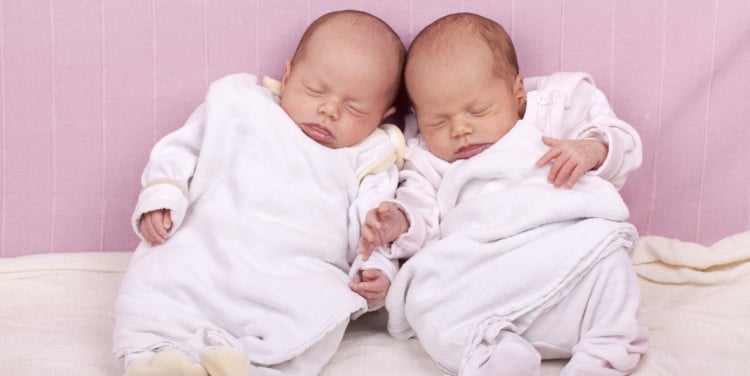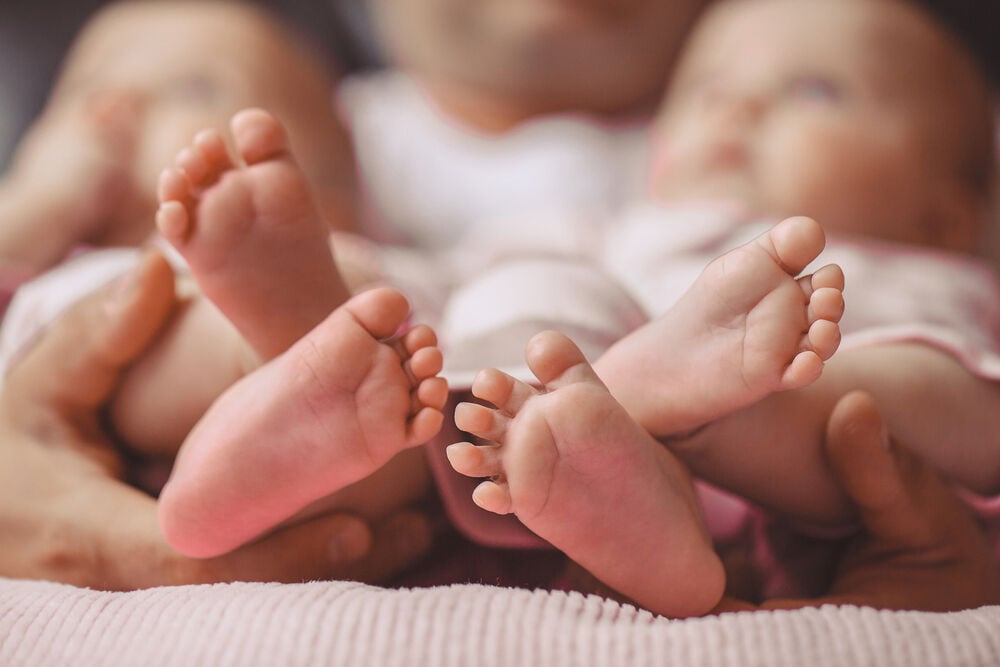At first sight, paternal twins may look exactly alike. They’re the same gender, look exactly alike, and may even dress the same. But how identical are they really? Let's find out.
-
Tracking cycle
-
Getting pregnant
-
Pregnancy
-
Help Center
-
Flo for Partners
-
Anonymous Mode
-
Flo app reviews
-
Flo Premium New
-
Secret Chats New
-
Symptom Checker New
-
Your cycle
-
Health 360°
-
Getting pregnant
-
Pregnancy
-
Being a mom
-
LGBTQ+
-
Quizzes
-
Ovulation calculator
-
hCG calculator
-
Pregnancy test calculator
-
Menstrual cycle calculator
-
Period calculator
-
Implantation calculator
-
Pregnancy weeks to months calculator
-
Pregnancy due date calculator
-
IVF and FET due date calculator
-
Due date calculator by ultrasound
-
Medical Affairs
-
Science & Research
-
Pass It On Project New
-
Privacy Portal
-
Press Center
-
Flo Accuracy
-
Careers
-
Contact Us
Paternal Twins: Characteristics and Surprising Facts


Every piece of content at Flo Health adheres to the highest editorial standards for language, style, and medical accuracy. To learn what we do to deliver the best health and lifestyle insights to you, check out our content review principles.
What are paternal twins?
Paternal twins — more commonly called identical twins — are monozygotic. They form when an egg is fertilized by a single sperm, creating a zygote. After conception, the zygote splits, creating two individual embryos. Because they come from a single fertilized egg, paternal twins share the same genetic origins and DNA.
However, their genetics may still differ. Certain mechanisms happen after the separation of the zygote, which can result in minor external differences in twins. After birth, environmental factors also influence genetic expressions, so even identical twins will still have individual personalities, behaviors, and physical traits.
Paternal twins (monozygotic twins) occur in three to four per 1,000 births worldwide. According to scientific research, most cases of monozygotic twinning don’t result from strictly genetic factors. However, some families do have higher rates of monozygotic twins, so genetics may play a role. In any case, no single cause of monozygotic twinning has been identified.
What we do know is that twin pregnancies are primarily a matter of chance. Monozygotic twins come from all areas of the world, but their presence varies by geographic location. For example, there are 1.3 cases of identical twins per thousand births in Japan but 50 cases per thousand births in Nigeria. On average, these twins happen in 13 of every thousand births.
Fraternal vs paternal twins
The main difference in fraternal vs paternal twins is the number of fertilized eggs involved. Fraternal twins develop when two separate sperm cells fertilize two eggs. In contrast, paternal twins develop when one sperm fertilizes one egg; then, after conception, the zygote splits, creating two individual embryos.
Paternal and fraternal twins are also known as monozygotic and dizygotic twins. Monozygotic twins share the same genetic origins, while dizygotic twins share about 50 percent of their genetic traits. They may differ in gender, and they always have their own placenta and amniotic sac. Dizygotic twins are as similar to each other as siblings in the same family.
The rate of dizygotic twins is influenced by certain factors:
- family history
- use of some fertility treatments
- use of assistive reproductive technology
- age
- BMI

Paternal twins’ characteristics
How paternal twins form
Paternal twins or monozygotic twins form when one sperm fertilizes one egg. The zygote then splits, creating two identical embryos. Although all paternal twins form early in pregnancy, there’s some variation in how early the fertilized egg divides.
In essence, if the egg splits earlier, the twins will be more independent and will have their own membrane coverings (amnion and chorion) and placenta.
- If the separation occurs in the first one to four days after fertilization, then each of the monozygotic twins will have their own placenta and amnion. These twins can’t be distinguished from dizygotic twins before birth.
- Monozygotic twins will have one placenta and two amnions if they separate on days four to eight.
- If the division took place from 8 to 12 days, then they will share a placenta and an amnion.
- Division after 12 days can lead to incomplete separation of embryos and the formation of сonjoined twins.
Paternal twins’ appearance and behavior
Although they share the same genetics, paternal twins are two unique individuals. They come from the same fertilized egg, but each embryo experiences small differences in their womb environment. Once they’re born, external environmental factors are also at play.
At first sight, paternal twins may seem completely identical. However, physical clues like moles, freckles, hair growth, and body language can distinguish them. Although they share the same DNA, external factors can cause differences in their personality and behavior.
How to know you’re expecting paternal twins
Parents may wonder about their baby’s gender. It’s not uncommon for a pregnant person to wonder if they’re carrying twins. Fortunately, modern technology makes it easy to determine if you’re pregnant with paternal twins.
If you’re expecting, you’ll probably have your first ultrasound sometime between 8 and 14 weeks. The ultrasound technician can identify whether you’re carrying multiple babies. Next, they can identify whether the eggs share the same placenta and amnion or not. If the separation happened early and monozygotic twins have different placentas and amnion, you won’t know you’re having identical twins until after their birth.
If you are expecting twins, your health care provider will offer guidance on nutrition. You may need different prenatal supplements than a person expecting a single baby, and you might need more frequent monitoring by a health care provider. People with twin pregnancies have a higher chance of needing a cesarean section. By making some adjustments to your lifestyle and work routine, you’ll give yourself and your twins a healthy head start.
Take a quiz
Find out what you can do with our Health Assistant


Hey, I'm Anique
I started using Flo app to track my period and ovulation because we wanted to have a baby.


The Flo app helped me learn about my body and spot ovulation signs during our conception journey.


I vividly
remember the day
that we switched
Flo into
Pregnancy Mode — it was
such a special
moment.
Real stories, real results
Learn how the Flo app became an amazing cheerleader for us on our conception journey.




